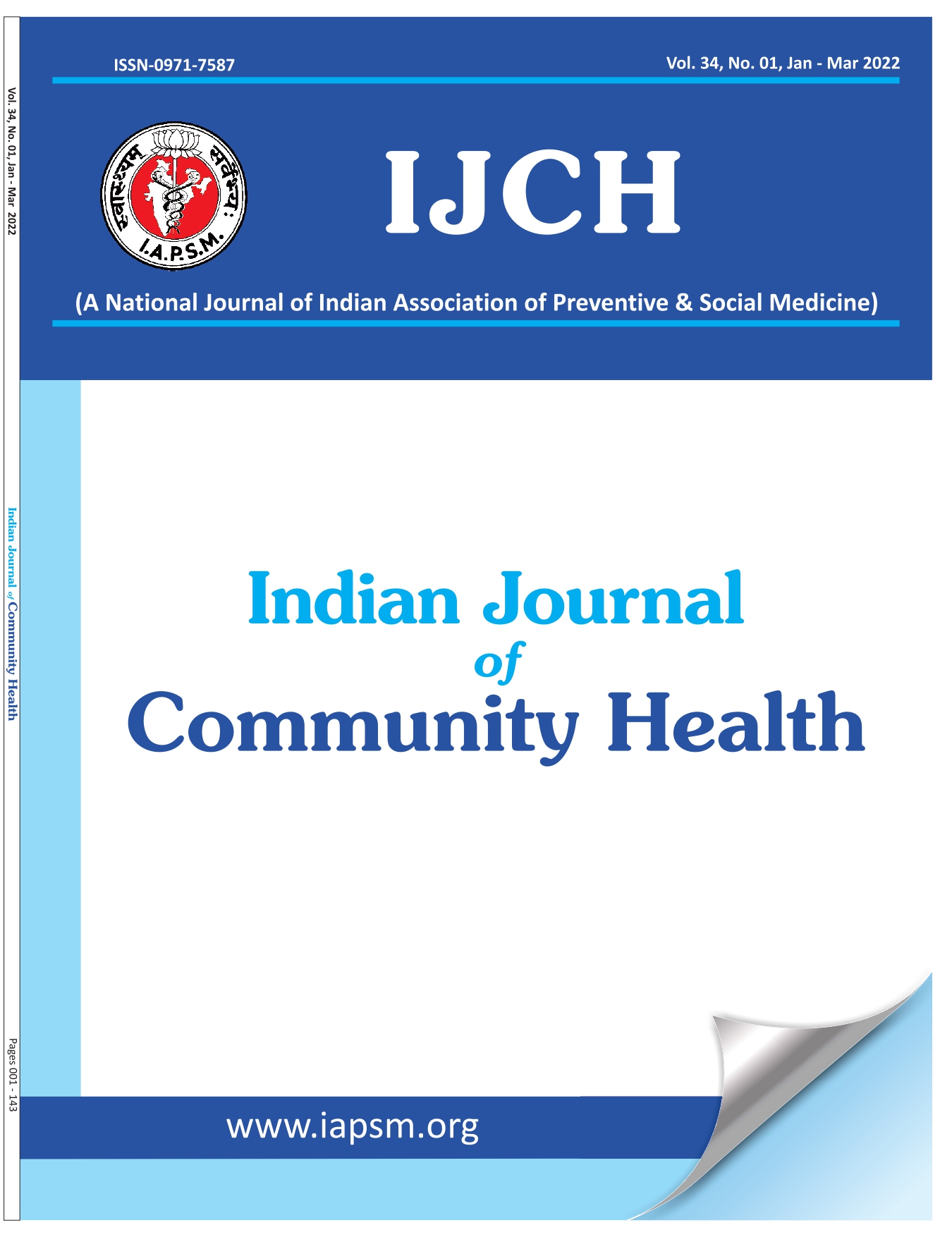Nutrition assessment of elderly residing in urban areas and urban slum: A hospital based comparative study
DOI:
https://doi.org/10.47203/IJCH.2018.v30i04.015Keywords:
Malnutrition, Elderly, MNA, GNRI, MUSTAbstract
Background: In Maharashtra the elderly population is 9.9 % of the total state population (Census 2011). There is a need to highlight the nutritional problems being faced by the elderly in India. Early detection of malnutrition and timely interventions can help to reduce morbidity in the long run. Aims &Objectives: To find the prevalence of malnutrition in elderly and compare nutritional status of elderly residing in an urban area and urban slum. Material & Methods: This was a cross sectional hospital-based study. Data was collected from the civil OPD and ex-service men OPD of the hospital each having a catchment population from urban slum and urban area respectively. A total of 331 patients > 60 years of age were included. Nutritional status was assessed using the MNA, MUST and GNRI. Serum albumin levels were measured using colorimetric method. Results: The overall prevalence of malnutrition and at risk as per MNA score was 168 (50.7%). Out of 331 subjects, 209 belonged to urban slums and remaining 122 were from urban area. The gender and age distribution were comparable in both groups. The mean BMI of subjects from slum area was significantly lower as compared to urban group (22.3+ 5.3 vs 26.3+ 4.5) p<0.001. Proportion of elderly who had MNA score below 24 was significantly higher in the slum area (p<0.05). Proportion of elderly with mid arm circumference and calf circumference below the cut off of 22 cm and 31 cm respectively was significantly higher in slum area (p<0.05). Serum albumin levels were comparable in both groups. Mean BMI of elderly in urban area was >25Kg/m2. Conclusion: The overall prevalence of malnutrition was high. The nutritional status of elderly in urban slum was significantly worse than that of elderly in urban area.
Downloads
Downloads
Published
How to Cite
License
Copyright (c) 2018 Indian Journal of Community Health

This work is licensed under a Creative Commons Attribution-NonCommercial-NoDerivatives 4.0 International License.





